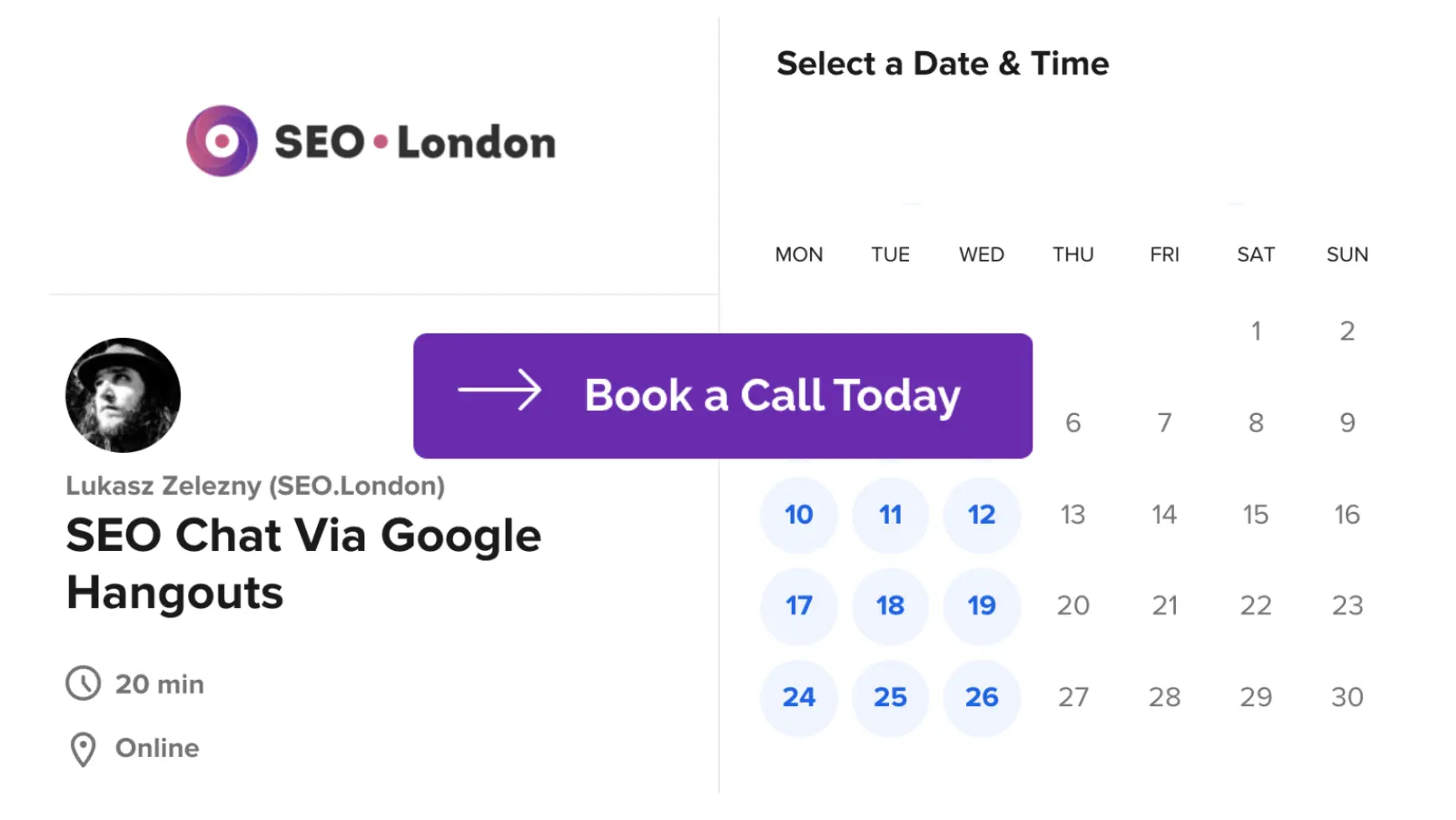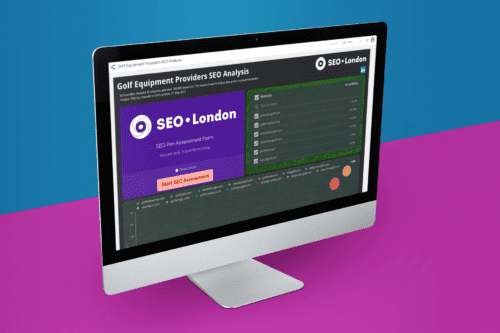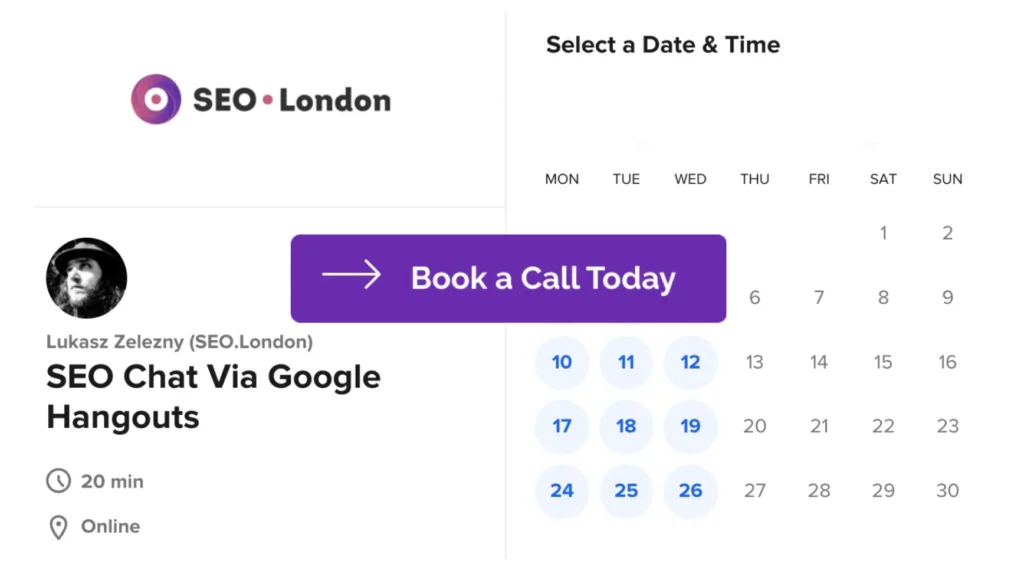Welcome to an exciting journey in the world of Search Engine Optimization (SEO). Today, I’ll demystify a core concept that often leaves beginners scratching their heads. We’re lifting the hood on “crawling”. If we were traipsing through the expanse of SEO like it’s a dense jungle, crawling would be our compass guiding our steps. It’s an elusive beast that holds undeniable sway over your site’s visibility and rankings. By the end of our ride today, you’ll not only comprehend this seemingly esoteric term but also appreciate its weighty impact.
What is Crawling in SEO?
Diving right into business, what exactly is crawling in SEO? Essentially, it’s a process undertaken by search engines to discover and index new or updated web pages and content. The pivotal players here are search engine bots aptly christened as “crawlers” or “spiders”
Increase your online presence with Lukasz Zelezny, an SEO Consultant with over 20 years experience — schedule a meeting now.

These electronic spiders comb the vastness of the internet following links from one page to another. As they gallivant around online, any encountered webpage is fetched back to their database, otherwise known as indexing. This intricate interplay between discovery and retrieval informs search engine results when users type queries into search bars.
In essence, you can consider crawling as a recon mission executed by search engines trying to unearth every single bit of content published on your website. Aware of this now, don’t you reckon this has some pretty significant implications for your SEO efforts? Indeed it does! Carry on reading and let me show you just how transformative grasping this concept can be for elevating your digital presence.
Web crawling, nestled within the realm of Search Engine Optimization (SEO), operates by meticulously scanning websites on the internet. Powered by specialized bots known as web crawlers or spiders, this process helps create a copy of all the visited pages for later processing by the search engine.
To understand how web crawling works, let’s break down its essential steps:
- Identification: Predominantly, web crawlers kickstart their mission from a list of popular URLs—known as seeds—and begin scrutinizing them.
- Exploration: After that, these algorithms traverse through every hyperlink present on these pages and extract other URLs.
- Cataloging: The final act involves returning all the collected information back to the search engine servers.
Therefore, it’s like making an impressively vast network starting from one single node at a time.
This ongoing cycle results in a comprehensive index that internet users leverage while searching for specific content online via search engines such as Google, Bing or Yahoo.
However, with exponential growth in URLs each day due to user-generated dynamic content like blogs or forums posts, challenges do exist inherent to website complexity and crawlability concerns.
Get More Customers Online with Lukasz Zelezny, an SEO Consultant with over 20 years experience — schedule a meeting now.

It’s also worth mentioning is that not all pages are crawled equally – factors such as server responses and page hierarchies impact which portions of your website get crawled and indexed more frequently.
Intriguingly enough though, it’s critical to remember “what is crawling in SEO” isn’t purely about number-crunching years’ worth of data; rather it focuses remarkably more on smart evaluation of resources leading to understanding relevance and utility concerning user queries. This invariably brings us towards our subsequent discussion around Crawling Budget versus Crawl Efficacy.
What to ask an SEO Consultant
Understanding the concept of crawling in SEO isn’t just a fancy term savvy marketers toss about. It’s an integral component of ensuring your website achieves the visibility it deserves on search engines. The significance of having your site crawled can be summarized into three core reasons:
- Visibility and Recognizability: A light bulb moment for many beginners is realizing that Google doesn’t automatically know when a new website or page is created. Crawlers are like explorers, venturing through the vast expanses of web content to find your pages and register them onto their map: the search engine index. Without successful crawling, your page remains invisible – drifting in digital obscurity.
- Indexation and Ranking: Once crawlers have discovered your website, they dissect its content to understand what’s on each page. This information feeds into Google’s index — a vast database used to pull relevant results when users type queries into a search bar. A well-crawled site will lead to efficient indexing which subsequently boosts your chances of ranking higher on SERPs (Search Engine Results Pages).
- Site Updates & Fresh Content Recognition: Your website isn’t static; you likely update content or add fresh pages regularly as part of SEO strategy implementation or general upkeep tasks. To ensure these changes get noticed by search engines promptly, routine crawl sessions are crucial.
Emphasizing the necessity for optimal site crawlability, Martin Splitt from Google explains, “It’s fundamental that we’re able to access your content ” (Google Webmaster Central Hangout – 2019). By guaranteeing this access via effective crawling measures, you’re not leaving any opportunities untapped within this increasingly competitive digital landscape.
Keep in tune with me as I delve further into measuring crawler efficiency and gauging search engine support for web crawling practices in subsequent sections.
Measuring Crawling: Crawl Budget Vs. Crawl Efficacy
As you dive deeper into the aspects of SEO, you’ll come across these two crucial concepts: crawl budget and crawl efficacy. Understanding them is essential in ensuring your site’s visibility on search engines.
Crawl Budget Fallacy
The term “crawl budget” represents the number of pages a search engine, like Google, intends to crawl on your site within a specific timeframe. Contrary to popular belief, it doesn’t directly affect all websites. It’s here that we encounter a common misunderstanding — the crawl budget fallacy.
Honestly speaking, unless your website houses over thousands of pages or continually pushes out new content every minute (akin to prominent news sites), you needn’t worry too much about this metric affecting your SEO results drastically. Even so, comprehending how it works will broaden your knowledge as an SEO stalwart and enable you to better manage larger blogs in the future.
A lower crawl rate doesn’t automatically imply low ranking potential. The quality of the content continues to be paramount.
Crawl Efficacy Value
On the flip side of our discussion lies “Crawl Efficacy.” Undeniably complex yet worthwhile understanding, this concept focuses more on boosting organic traffic rather than just increasing crawling rates for sheer volume.
The cornerstone is simplifying access for search engine crawlers by structuring data intelligently and eliminating accessibility barriers. In essence, it harnesses efficiency via quality instead of relying solely on quantity.
High crawl efficacy ensures that crawlers can reach value-rich data faster and index important pages swiftly before they deplete their assigned budget. Essentially, it funnels crawling efforts towards impactful data that has a high likelihood of bolstering SERP rankings.
By focusing on enhancing crawl efficacy rather than simply expanding the allocated budget, there arises an opportunity for emerging sites with rich content to compete favorably against established domains with exponentially higher page volumes.
Remember – A smaller website with well-balanced and easily navigable architecture can perform far better than vast unruly sites when scrutinized under the lens of crawling metrics.
Intriguingly comprehensive indeed! Expanding upon these pivotal factors aids us in clarifying what ‘crawling in SEO’ encompasses beyond just terminology jargon whilst unraveling its tangible impacts as well!
Search Engine Support For Crawling
In essence, web crawling is a critical part of SEO. It’s how search engines like Google discover updated content on your website. However, as crucial as it is for Google, they’re not the only ones in town. There are also non-Google services you should be aware of that can provide invaluable support for your site’s crawling process.
Non-Google Support From IndexNow
IndexNow represents an exciting initiative to help websites get their content more quickly indexed by search engines and potentially gain faster visibility in search results. Think of IndexNow as a single ping to alert various search engines at once about changes or additions to your site’s content.
This fast-track indexing concept was introduced by Microsoft Bing but has garnered support from several other search engines such as Yandex and DuckDuckGo, offering the ultimate goal of higher page ranks and better online exposure.
Google Support From The Indexing API
Considered one of the most powerful tools provided by Google, the Indexing API can accelerate the process of getting your pages crawled and included into Google’s index. Although primarily designed for Job Posting and Live Streaming sites, creative SEOs have found ways to broaden its usage with other types of sites.
The beauty behind this interface lies in its real-time nature – changes on your website can be promptly shared with Google which then triggers almost instantaneous crawling – a significant boost compared to waiting for routine crawls.
Google Support Within Google Search Console
Lastly, let’s look at another fantastic tool offered within the scope of what is crawling in SEO: Google Search Console (GSC). This free service from Google helps users maintain their site’s presence in search results. GSC excels when it comes to identifying potential issues with your site that could affect performance in SERPs (Search Engine Result Pages).
By using GSC, you can manually request indexing for specific URLs if you suspect they haven’t been properly indexed by crawling bots. Additionally through its Sitemap report feature, webmasters can see which URLs from the previous 2 months were crawled along with any errors encountered during those crawls; an unbeatable resource when maintaining crawl health!
Each method discussed above plays a significant role in facilitating web crawlers’ easy access to new or updated information on your site- whether that’s via automated alerts sent across multiple platforms or controlling aspects directly via tools provided by behemoth providers like Google themselves.
How To Achieve Efficient Site Crawling
When it comes to search engine optimization, efficient crawling signifies a significant role. Keyword here is efficient. Let’s look at some practical ways to ensure not just crawling, but effective and beneficial crawling.
Ensure A Fast, Healthy Server Response
One of the best techniques to achieve efficient site crawling is by ensuring a fast, healthy server response.
- Maintain Peak Performance: The performance of your server sets the tone for how quickly Googlebot can crawl your pages.
- Limit Errors: Be cautious about server errors as they can throw a wrench in Google’s ability to index your site swiftly.
- Optimize Loading Speeds: Slow-to-load websites make for sluggish crawlers; thus always strive for optimized page loading speeds.
Having an active and healthy server indeed lays the foundation on which other crawling techniques can build upon effectively.
Remove Valueless Content
Another step towards achieving efficient crawling by SEO crawlers involves removing valueless content from your website. This means:
- Pruning non-index pages like thank you pages or duplicate contents
- Temporary URLs that are created due to testing or development should be removed promptly
- Old landing pages and useless tags could turn into unnecessary baggage slowing down the crawler.
By doing so, it facilitates more manageable and valuable job for bots while raising the overall quality perception of your website.
Instruct Googlebot What Not To Crawl
Formulate instructions for what mustn’t be crawled plays another critical role when strategizing for efficient site crawling. One way of doing this is through configuring robots.txt file, allowing you to guide Googlebot away from areas of your site that may not be relevant or prudently leveraging meta robots commands such as ‘noindex,’ ‘nofollow’ among others. Control over what gets crawled translates into saving resources and allowing focus on truly essential aspects of indexing.
Instruct Googlebot On What To Crawl And When
As well as telling Google what not to crawl, it’s equally important instructing it on what requires more attention given its relevance in terms of fresh content or updated materials using the prioritization capabilities within XML sitemaps.
Knowing how often updates occur allows you to advise search engines on when recrawling becomes necessary. This isn’t just about ensuring up-to-date information but prevents squandering valuable crawl budget resources where no change has been made or required.
Support Crawling Through Internal Links
Lastly, support effective site crawling through strategic internal linking patterns inside the boundaries of your website: 1) Provide clear navigation paths for bots cataloging topical relevancy 2) Build strong link architecture focusing power around crucial pages 3) Utilize keyword-targeted anchoring tactfully helping both users navigating easily & robots discerning context effectively
Remember! Adept implementation concerning internal links makes following breadcrumbs easy-peasy not only enticing visitors with coherent journey manifests but also ensuring bot-friendly exploration promoting better understanding translating finally into favorable rankings thus underpinning our overall intent behind efficient site crawling!
Optimizing Web Crawling
Optimizing web crawling is centered around making your website accessible, easily navigable and valuable. This optimization ultimately influences how search engines rank your content. There are several strategies you can employ to ensure optimum crawling of your site.
Prioritize Your Content For Indexing
The first major tip in optimizing your website for crawling is ‘prioritization’. You need to understand which content holds high importance on your website and prioritize it for indexing. By extension, also recognize less significant pages or outdated information and either update or exclude them from crawls.
Optimize Website Speed
Another critical aspect lies in the speed at which your website loads. The faster a crawler can fetch data from your site, the more efficiently it commences its duties, leading to better positioning in search results due to efficient execution of what is crawling in SEO responsibility.
Create an XML Sitemap
Creating an XML sitemap assists crawlers directly by providing a roadmap of where all important content exists upon your site. It aids the bot’s understanding on what areas to prioritize during indexing.
Use SEO-friendly URLs
Ensuring that you use informative URLs that intelligently portray page contents also guides crawlers towards significant sections of sites, optimizing the process further.
Note: Using clear and descriptive alt tags with images on your webpage enhances their ability to be found by image search algorithms—an often overlooked corner of SEO strategy but plays an integral part when considering consolidated techniques encompassing ‘what is crawling in SEO’ altogether.
By implementing these practical measures—prioritizing essential content for indexing, optimizing website speed, creating XML sitemaps, using meaningful URLs and proper tagging of imageries—webmasters stand a viable chance of aiding search engine bots decipher their websites effectively thereby improving visibility.
Remember! An efficiently crawled site paves the way toward better opportunities regarding ranking so use these strategies as a stepping stone towards realizing optimal web presence within respective niches.
Conclusion
Having explored what crawling in SEO entails, we recognize its importance as the foundational process of any search engine. It’s clear that ensuring your site is accessible and easily navigable by search engines isn’t just optional – it can be the difference between being discovered and remaining invisible.
Excellent web-crawling efficiency begins with establishing a healthy server response, removing irrelevant content, and carefully instructing Googlebot on what to crawl. Core to this is understanding the balance between your site’s crawl budget and efficacy, knowing where those resources would be best allocated for maximum ROI. Keep abreast of evolving tools like IndexNow and various options within Google Search Console for managing indexation more efficiently.
Further, nurture a healthy internal link structure that compasses support for smooth website crawling. Just akin to how well-laid roads significantly ease our travels, they facilitate web crawlers’ task, driving deep into your website while hastening indexing speed.
Creators today bear the responsibility of making their content reachable for both users and search engines. And though efficient crawling isn’t an overnight achievement—it’s progressive—every step towards improving it brings us closer to better SEO results. Remember: Quality content staying unindexed yields no benefits for anyone.
In essence, improved search visibility certainly starts from allowing efficient “crawls”. Herein lies the true meaning of “What is crawling in SEO”, transforming our perspective from mere definitions to concrete impacts on digital visibility strategies.
 Published in: June 2023
Published in: June 2023
Last Updated in 2023-07-04T19:52:32+00:00 by Lukasz Zelezny




